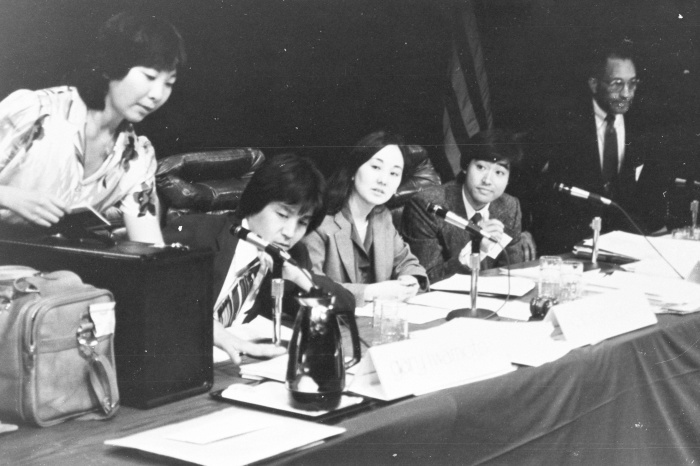October 7, 2014
In 1987, in the midst of the movement for redress and reparations for the forced removal and incarceration of Japanese Americans during World War II, the Smithsonian Institution’s National Museum of American History debuted an exhibition titled A More Perfect Union: Japanese Americans & the U.S. Constitution as part of the commemoration of the 200th anniversary of the constitution. Reinforcing the conclusions of the congressionally mandated Commission on Wartime Relocation and Internment of Civilians four years earlier, A More Perfect Union presented an unambiguous example of the constitution gone wrong in the country’s official history museum, where no doubt millions learned about this history in the seventeen years the exhibition was up. A new article by Abbie Salyers Grubb on A More Perfect Union highlights the new articles this month.
While many of us who are old enough remember A More Perfect Union, I suspect a lot of us don’t know about a remarkable exhibition centered on the Japanese American incarceration that was on display at the Japanese equivalent of the Smithsonian, the National Museum of Japanese History (commonly referred to as Rekihaku) in 2010–11. Titled Japanese Immigrants in the United States and the War Era, this exhibition takes a very different view of the incarceration as viewed from the Japanese perspective, as described in the new article by Kaori Akiyama, a Japanese graduate student studying museum exhibitions in Japan and the U.S. There will be many more articles on these exhibitions coming shortly.
Other new articles also preview more of what’s to come: Greg Robinson’s pieces on the Fujii v. California alien land law case and mine on Esther Takei Nishio, the first “regular” Japanese American allowed to return to California in 1944 preview many more to come from the early postwar period. Patricia Wakida’s on Nikki Sawada Bridges Flynn is one of many she is working on on Japanese American writers and artists strongly influenced by their incarceration experience. There are a few articles on the War Relocation Authority community analysts up already, but many more will be coming, including the newly posted one on John Radamaker, the analyst at Amache in 1943–44 that I collaborated with Cherstin Lyon on. (Rademaker was one of three Community Analysis Section staffers who ended up at the University of Hawaii after the war.) Finally, Stan Yogi contributes pieces on lawyers who worked on the either the wartime cases or coram nobis cases—Lorriane Bannai, Peter Irons, Dale Minami, and James Purcell—with more to come.
